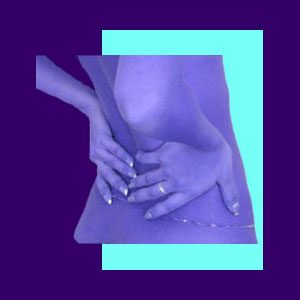
Managing back pain is the general goal of conservative treatment, often preventing a patient from ever attaining a true cure. No one wants to spend life suffering, but back pain is usually a chronically debilitating and long lasting syndrome that might never relinquish its grip once firmly established.
Pain management is an incredibly profitable medical specialty and is also the primary focus of most complementary healthcare modalities. The need for managing pain has grown to levels never before seen in the medical professions, since there are more chronic and treatment-resistant disorders plaguing modern man than ever before in human history.
Many doctors have written on this subject, pondering the reason why our collective anatomies have seemed to fail us at a time in history when we live longer and healthier than ever before. Why are we having much more pain now and why can we no longer cure it? Why must be rely on managing pain over time, rather than ending it as in the past?
This highly critical essay examines the terrible failures of the modern dorsalgia treatment establishment, including diagnostic incompetence, enslavement of patients into symptomatic care and the economically-induced extinction of cures for chronic pain.
Managing Back Pain Due to Diagnostic Error
One of the primary reasons why patients can not find cures for their pain is the ever-growing incidence of diagnostic mistakes. Doctors literally seem to be guessing at what is causing pain in most patients, using unproven methods of diagnosis to label patients as suffering from a variety of structural spinal issues.
Modern medical equipment is marvelous and can visualize the spine in vivid detail previously unattainable. Now, we can see every structural irregularity and document each region of the spine in all its organic glory. Unfortunately, doctors seem to have forgotten the natural diversity of life and the proven fact that “normal” structure varies from person to person.
No face or body is identical to any other. Why should anyone’s spine be a textbook example of “normal”? This logic is lost on the millions of physicians and chiropractors who blame any atypical looking spinal structure as the definitive cause of pain, as long as the location is even remotely close to the symptoms expressed.
Forget about the countless proven research studies completed over the last 70 years that demonstrate no correlation between structural spinal abnormalities and the incidence of back pain. Forget the hundreds of studies that show identical pain conditions in patients who demonstrate no structural abnormality whatsoever. Forget about the logic that 95% of the diagnoses made can not even begin to explain the symptoms expressed, due to a lack of correlation in location or tissue-type involved.
Misdiagnosis is truly the most serious obstacle that all chronic pain suffers will ever face in their battle for relief. Our statistics show that misdiagnosis is virtually universal in people with long-term pain. These patients often blame treatment for failing them, but never even think to question the diagnostic accuracy.
Pain Management with Symptom-Based Care
Disregarding whether the diagnosis is correct or not, most treatments directed at the suspected source of pain will be aimed at the symptoms, rather than the causation. This means that regardless of how long treatment lasts, or how dangerous it becomes, a cure will never be reached. No cure is even being attempted. Instead, treatment is just trying to make the patient better able to cope with the pain that they are suffering.
Symptomatic care most often consists of pharmaceutical therapies, but can also encompass a great number of other modalities, including physical therapy, chiropractic, massage, TENS, injections, minimally invasive surgeries and a endless number of other common care methods.
Symptom-based care is fine in cases where patients understand the reality of its limitations and are clearly and definitively informed that no cure will ever be possible. Symptomatic care is acceptable for incurable diseases where suffering can be minimized. However, for common back and neck pain, that can definitely be cured in the vast majority of patients, symptomatic therapy amounts to a cruel form of callous, yet profitable, slavery.
Economic Incentive for Managing Back Pain Instead of Curing It
When considering the subject of profitability, one begins to better understand why back pain treatment has evolved in the manner that it has:
Diagnostic processing, using logical and proven methods, is complicated and unprofitable work. It is far easier for doctors to demonstrate structural irregularity using fast and expensive testing that can “prove” to the patient that their anatomy is defective or deficient. The evidence will be right there before their eyes… Well, that is as long as the patient has no idea what they are really looking at or just how common the types of abnormalities blamed for causing their pain truly are. In fact, some of these “irregularities” are universal and demonstrated by virtually every human adult on our planet. Let the machine do the work, produce a result and charge a ridiculous amount to label a person with an incorrect cause of pain. We are off to a good start in making money and doing little to provide relief.
Next, why provide any cure, when symptom-based care is so much more profitable? Keep the patient in extended duration treatment for as long as possible in order to maximize the economic value of each pain syndrome. Recommend different approaches to care and keep leading the patient to think that the next treatment choice, or round of therapy, will be “the one” to make the difference. Sure this is true, if “the difference” made is the ability to trade-in the doctor’s BMW for a Bentley… Once again, it is all about the money.
Finally, even the most gullible patients will eventually get a clue and demand better results from care. This is when doctors really step-up and now push super pricey, dangerous and unproven surgical options that will create vast fortunes for providers, while literally demolishing lives due to mistaken diagnosis, followed by contraindicated treatment. Is it any surprise that upwards of 90% of spinal surgeries fail to provide relief over timelines of several years? Of course not.
Essays such as this one always bring in angry comments from doctors who really feel the sting of such unsavory truths hitting close to home. We also typically receive a few letters from patients who claim to be “recently completely cured” by some treatment or surgery. We are so happy that you are feeling better. Please write back to us in a few years to update us on your progress. In fact, so many of you have done just this and have recanted their “cure disclosure” since the results attained were short-lived in almost every instance. Over 96% of patients we have followed over a ten year timeline, who initially claimed to be cured by a particular treatment or surgery, suffered a relapse that brought pain right back into the spotlight of their lives, within 7 years. This fact includes the very author of this essay: me.
A final note: Some diagnoses are correct. Some treatments are enlightened. Some positive results endure. Some cures really happen. If “some” amounted to 90%, we would stop working already, shut-up and close down our operations, since doctors would be doing their jobs. If “some” amounted to 60%, we would see the great progress and work to help the rest of the people get on the majority side of cured patients. If “some” even amounted to 30%, we would admit that progress is being made and would give credit where credit is due. However, “some” currently amounts to about 4% of the patient population. This number is a travesty of medical science and an obvious indicator that the economics of medicine play a much more critical role than the logic, ethics or effectiveness of care. Since this is the current reality, we have no choice but to keep advocating on behalf of suffering people worldwide through our research and education efforts.





